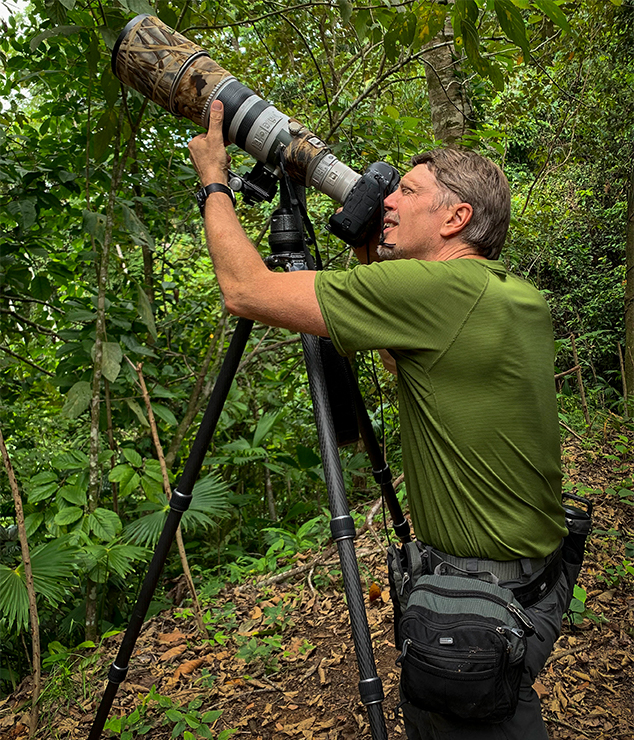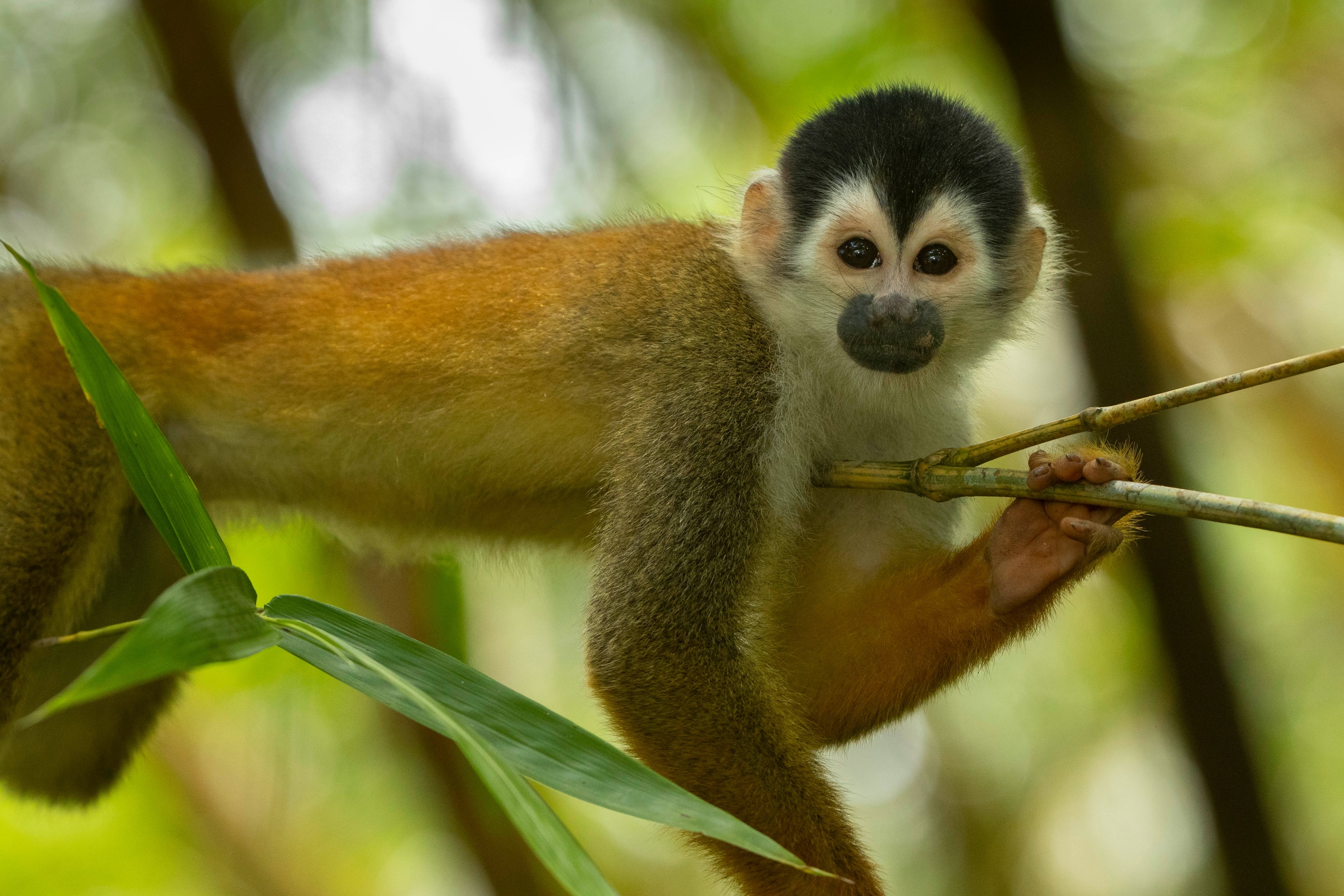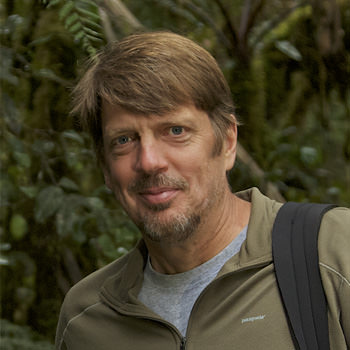Costa Rica’s Osa Peninsula - a Photographer’s Paradise
21.09.2021 | Reading time: 10 minutes
Author: Tim Laman
Just before the pandemic slowed down all of our world travel, one of the last travel photography trips I made was to Costa Rica’s Osa Peninsula. This peninsula in the Southern part of Costa Rica is surrounded by the Golfo Dulce on the east, and the Pacific Ocean on the west, and is one of the most remote parts of the country. It harbors Corcovado National Park and several other conservation areas. It is a haven for eco-travel, with many options for exploring both the rainforest and coastal habitats.
There are many reasons to make such a trip, but personally, ever since I spent a year in the rain forest of Borneo as a student many years ago, I have a fascination with the incredible diversity of life in rain forests all over the tropics, and a desire to share the wonders of these places with others through my photography. Also, raising awareness about the importance of protecting rainforests just keeps becoming more urgent! Protecting biodiversity, mitigating climate change, and now also the realization that forest disturbance and wildlife nature hunting increase the risk of disease transmission to humans and pandemics - all these things make raising awareness about rainforest more important than ever. And I am a firm believer that photography has an important role to play in that.
Osa Peninsula Photo Subjects
When I visit a diverse place like the Osa Peninsula, I want to be ready for anything, and be able cover a variety of subjects - birds and primates are a personal favorite, but also reptiles, insects, and even marine mammals if I have a chance to get out on the ocean. To shoot birds and monkeys in the rainforest, of course it is possible to do some shooting with a hand-held camera and lens, but often you are watching the animal for some time, waiting for them to do something that will make your photo interesting, like look up, take a bite of what they are eating, or perhaps take off or leap into the air.
In the rainforest regions of the world including the Osa, rivers often provide the best access deep into the forest. Plenty of light reaches into the forest along the river edge, so the plant life is especially rich and there are often many fruiting and flowering trees attracting wildlife. So cruising along a river in a small boat is often a great way to see animals and photograph them.

Camera Equipment
If you are just holding your camera up to your eye, you will soon have tired arms and drop your camera down for a little rest. Of course just when you do that, the action happens, and you miss the shot. That’s why I always prefer to shoot off a tripod or monopod with a gimbal head in this type of situation. Whether it’s a feeding Scarlet Macaw, or an endangered Central American Squirrel Monkey, I don’t want to miss the peak moment that will make the image special. Having your camera ready and aimed in the right direction on a tripod makes it a lot easier to be patient and just wait for the action to happen.
Even in a boat, I like to support my camera with a tripod or monopod as space allows, especially when using a long lens. Then when I come around a bend, and see an American Crocodile basking on the bank, with beautiful butterflies flitting around and landing on its eye to drink those special crocodile tears, I am ready to capture the moment, and can just concentrate on framing and focusing my subject.
I switch the heads between the different supports for different situations:
- Systematic Tripod for my full standing height and big lenses
- Mountaineer tripod for working smaller subjects close to ground, and to have a second tripod for time-lapses
- Gimbal head for long lens work on big tripod or on monopod
- Ball head for landscapes and macro shots.
- Pan-tilt Head for shooting some occasional video.

Macro photos: Insects, frogs and reptiles
The rainforest is also incredibly rich in smaller creatures like insects, frogs, and snakes that you can find almost anywhere you look. Some are flashy and impossible to miss, and perhaps just a stroll along a path at the edge of the forest might give you chances to photograph beautiful butterflies visiting flowers, but for finding smaller reptiles and amphibians, and being safe while you do so (as some of them are poisonous), it is really great to go out with a local guide who knows the forest and the creatures. Again, you can do some of your macrophotography with a hand-held setup, I like having a small tripod with me so that if I have a cooperative creature that is holding still and allowing me to move in pretty close with my camera like the resting Eyelash Viper, I can use longer exposures to balance the background light with foreground fill lighting on the subject to show the creature in its environment.
Support the local economy
Besides sharing your images to spread the word about the importance of rainforests, there is one other very tangible benefit to visiting rainforest reserves as a traveling photographer, and that is supporting the local economy. In places like the Osa Peninsula, as visitors have increased, there has been an incentive to local people and businesses to switch from destructive practices like clearing forest for cattle ranching and instead, create guest houses and eco-lodges on the edges of the nature reserves, much to the benefit of wildlife and the local economy. Hopefully as we get past this pandemic, and global travel gets going again, tourism in Costa Rica and other tropical rainforest countries will pick up, and continue to provide the local people the kind of financial incentives to protect their forest that makes conservation so much more successful. I hope to see you out there soon with your camera!




Tim Laman
Tim Laman is a field biologist and wildlife photojournalist. Tim first went to Borneo in 1987 and his pioneering research in the rain forest canopy led to a PhD from Harvard and his first National Geographic article in 1997. He has pursued his passion for exploring wild places by becoming a regular contributor to National Geographic magazine where he has published 23 feature stories.


























